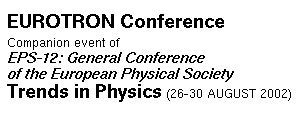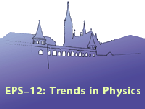 |
 |
 |
Tremendous progress in neutron scattering research capabilities has been achieved over the past half century primarily by the development of the performance of the instrumentation, both in terms of new concepts and approaches and advances in components, such as detectors. Over the same period of time the brightness of neutron sources only increased by a modest amount. ESS will offer an unprecedented jump of some two orders of magnitude in a crucial source performance parameter, the instantaneous peak flux during the pulses compared to the leading continuous or pulsed neutron sources existing today, while in terms of time average flux it will equal the most powerful continuous sources. The pulsed character allows for a more efficient use of the total number of neutrons produced, and this efficiency differs from one application to another. The goal of the ESS project is to combine the vastly enhanced, unique source quality with the most advanced instrumentation concepts and techniques to achieve a quantum leap in neutron scattering research opportunities well beyond what could be achieved by concentrating only on enhancing the source performance or only trying to further develop instrumentation. The results of the combined effort as characterised by the sensitivity of observing small signals.(which is the main limitation in the use neutron scattering techniques in general) are found to amount to as much as three orders of magnitude in some unique core applications and more than two orders of magnitude in the majority of neutron scattering work. To achieve this huge step forward, well comparable to the progress expected from the realisation of large free electron laser in X-ray research, we need to vigorously advance neutron scattering instrumentation techniques together with the source performance. Extensive experience accumulated over the past 5 decades of using continuous reactor source and nearly 3 decades of progress with pulsed spallation. sources provides a solid and sophisticated basis for this effort. The utilisation of innovative concepts will further enhance the efficiency of using source power in the actual experiments. Examples include enhancement of the efficiency of extracting and transporting neutrons from the source to the sample by advanced neutron optical means, or sophisticated so called multiplexing techniques, which allow us to optimise the efficiency gains by the pulsed character of the source simultaneously for a large number of instruments with very different characteristics. As a result ESS will not only surpass all other neutron sources (existing or being built) by its higher neutron brightness achieved by more proton beam energy per pulse, but it will enhance this advantage by the more efficient use of the neutrons produced.
The following files are available:
- symp1mezei.pdf [9473 bytes]
- symp1mezei.doc [40960 bytes]
Eurotron Conference is supported by European Commission, High-Level Scientific Conferences